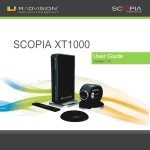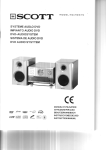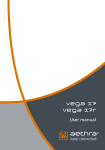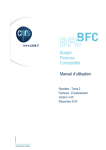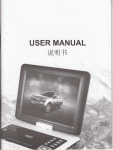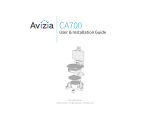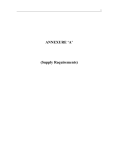Download Aethra Xtreme User manual
Transcript
Xtreme User manual Welcome Thank you for choosing a Aethra Video S.r.l. Product. Inside you will find useful information to help you get the most out of the Aethra product. The information contained in this document is the property of Aethra SpA., it is subject to change without notice and it shall in no way be binding for Aethra SpA © Copyright Aethra Video S.r.l. 2009. MS, Microsoft and NetMeeting are registered trade marks of Microsoft Corporation. Windows is a trade mark of Microsoft Corporation. All rights reserved. Cod. 074201012GB Rev. 0 – June 2009 2 Index INDEX.......................................................................................................................................... 3 SAFETY RULES......................................................................................................................... 5 WARNINGS ................................................................................................................................. 5 CLEANING .................................................................................................................................. 5 ENVIRONMENTAL SAFETY ........................................................................................................... 6 SAFETY RULES FOR BATTERIES .................................................................................................... 6 EN 55022 CLASS A COMPLIANCE ............................................................................................... 7 FCC 15 CLASS A COMPLIANCE ................................................................................................... 7 CE MARK ................................................................................................................................. 7 ABOUT THIS MANUAL ........................................................................................................... 8 USED SYMBOLS AND SYNTAX: ..................................................................................................... 8 ABOUT XTREME ...................................................................................................................... 9 PRELIMINARY ............................................................................................................................. 9 GENERAL INTRODUCTION ............................................................................................................ 9 FEATURES AT A GLANCE ........................................................................................................... 10 XTREME COMPONENTS ............................................................................................................. 10 VIDEOCONFERENCE TIPS .................................................................................................. 11 UPDATES AND DEEPENINGS ....................................................................................................... 11 CABLING SCHEME ................................................................................................................ 12 SYSTEM POSITIONING AND INSTALLATION................................................................ 13 CONNECTING THE AETHRA POD............................................................................................... 14 REMOTE CONTROL .............................................................................................................. 15 Remote control keys .................................................................................................... 15 Remote control alpha-numeric symbols to keys association........................................ 17 Remote control ............................................................................................................ 17 ABOUT GRAPHIC USER INTERFACE (GUI) .................................................................... 18 ELEMENTS COMPOSING A PAGE ................................................................................................. 18 HOW TO SELECT A PAGE ............................................................................................................ 20 FUNCTION KEYS USAGE ............................................................................................................. 20 MENU STRUCTURE ............................................................................................................... 21 FIRST TIME EQUIPMENT IS SWITCHED ON.................................................................. 22 Licence code insertion ......................................................................................................... 22 QUICK SETUP ............................................................................................................................ 23 3 CALLS MANAGEMENT......................................................................................................... 26 HOW TO MAKE A CALL .............................................................................................................. 26 Direct call ............................................................................................................................ 26 Call options...................................................................................................................... 26 Recall................................................................................................................................... 27 HOW TO MAKE A CALL FROM PHONEBOOK................................................................................. 27 HOW TO DISCONNECT A CALL .................................................................................................... 28 HOW TO ADD PARTICIPANTS TO A CONFERENCE (OPTIONAL) ...................................................... 28 SECURE CONNECTIONS ............................................................................................................. 29 HOW TO RECEIVE A CALL .......................................................................................................... 29 PRESENTATION ..................................................................................................................... 30 PHONEBOOK........................................................................................................................... 31 ENTERING NAMES IN THE PHONEBOOK ...................................................................................... 31 MODIFYING AND ERASING PHONEBOOK ENTRIES ...................................................................... 32 AUDIO-VIDEO MANAGEMENT .......................................................................................... 33 VIDEO INPUT MANAGEMENT ..................................................................................................... 33 VIDEO PRIVACY ........................................................................................................................ 34 CONTROLLING AUDIO................................................................................................................ 34 VIDEO CAMERA PRESETS ........................................................................................................... 35 SYSTEM CONFIGURATION – SETTINGS ......................................................................... 36 USER SETTINGS ........................................................................................................................ 37 User Preferences.................................................................................................................. 37 Call-Answer mode............................................................................................................... 37 Diagnostics .......................................................................................................................... 38 Load default values.............................................................................................................. 38 ADMINISTRATOR SETTINGS ....................................................................................................... 39 System ................................................................................................................................. 39 Calls..................................................................................................................................... 39 I/O connections.................................................................................................................... 41 Networks ............................................................................................................................. 41 Protocols.............................................................................................................................. 42 Utilities ................................................................................................................................ 43 TECHNICAL SPECIFICS ............................................................................................................... 44 Power rating ........................................................................................................................ 45 Use and storage conditions .................................................................................................. 45 Reference regulations (CE mark and reliability tests) ......................................................... 45 4 SAFETY RULES DEVICE IN CLASS I Always connect to a grounded socket. CAUTION: for the operator's safety, only use the mains adapter that has been provided with the device. CAUTION: the mains cable is used as a disconnecting device, use therefore an easily accessible outlet located near the device for the power supply connection. Never remove the mains plug while the device is connected. CAUTION: do not touch the internal parts of the device (and/or of the mains adapter). CAUTION: if objects or liquids leak into the device, disconnect the power supply cable IMMEDIATELY. Have it checked by an authorized technician before using the device again. CAUTION: contact an authorized technician/consultant for assistance. CAUTION: when making repairs, disconnect the device from the power supply. CAUTION: connect the LAN port to an internal LAN circuit only. It is absolutely forbidden to connect the system to an outdoor telecommunication line. CAUTION: the microphone POD cable provided with the system must be used only with this system and must not be routed under carpets, through walls, within risers, or as part of building wiring systems. CAUTION: the ETHERNET cable provided with the system must be used only with this system and must not be routed under carpets, through walls, within risers, or as part of building wiring systems. CAUTION: the HD-CAMERA cable provided with the system must be used only with this system and must not be routed under carpets, through walls, within risers, or as part of building wiring systems. CAUTION: the OUTPUT connector provides a Limited Power Sources DC output. CAUTION: This equipment will be inoperable when the mains power fails. CAUTION: the change from cold to hot environments can cause condensate to form inside the device. To avoid malfunctioning, wait at least 2 hours before connecting the device to the main power supply. Warnings Many of the components used in this device are sensitive to electrostatic charge. When handling the connection cables, disconnect the power supply and avoid direct contact with the connector terminals. When handling electronic components, touch a grounded surface to eliminate any static electricity. If possible, wear a grounding arm band. Failure to comply with these warnings could cause permanent damage to this device. Cleaning To clean the device use a dry soft cloth (or with a little bit of gentle detergent). Never use solvents, such as alcohol or gasoline, to avoid damaging the finish. CAUTION: in case of fire, do NOT use water to extinguish it. CAUTION: RISK OF ELECTRIC SHOCK The power supply used by this device involves lethal voltage levels. 5 Environmental Safety This equipment must not be treated as household waste and should instead be handed over to the applicable collection point for the recycling of electrical and electronic equipment. With the correct disposal of this equipment, you will help prevent any potential negative consequences for the environment and human health, which could otherwise be caused by inappropriate handling of this product. For more detailed information about recycling this product, please contact your local city office, your household waste disposal company or the dealer where you purchased this product. 6 Safety rules for batteries • Risk of explosion if batteries are replaced by an incorrect battery type. Dispose of used batteries following the user instructions. • The batteries of this equipment must be disposed of by either a recycling company or a company qualified for the disposal of dangerous materials. The battery may also be disposed of in special recycling containers specifically for worn out battery (this may vary form country to country). • Only use the same type of battery that was originally provided with the equipment. • Replace the batteries when the remaining power charge significantly low. Do not recharge. • Do not use any damaged batteries. • Do not to use the batteries for different reasons from those prescribed. • Do not short circuit the batteries (direct contact between + and – poles of the battery). This can happen accidentally during the maintenance of the equipment or the replacement of the worn out batteries. • Do not put the batteries close to flames, sparks, radiators, microwave ovens, fireplaces, direct sun light or other sources of heat. Do not throw the batteries into the fire. • Do not weld directly on the battery terminals. • Do not install the batteries with the polarity upside down. Please refer to the installation instructions for battery installation. • Do not damage the batteries in any way. Do not try to open or to pierce the batteries. • Avoid any accidental collision as it could cause the batteries to rupture and leak corrosive liquids or irritable vapours. In such case disconnect the power immediately from the equipment and batteries. • In case the battery liquids comes into contact with your skin or garments, wash the area immediately with water. If it comes into contact with your eyes, wash immediately with plenty of water and contact either a doctor or the nearest first aid office immediately. • Keep away from the children’s reach. EN 55022 Class A Compliance This is a Class A product. In a residential environment this product may cause radio interference. In such case the user may need to take adequate measures. FCC 15 Class A Compliance This equipment has been tested and found to comply with the limits for a Class A digital device, pursuant to part 15 of the FCC Rules. These limits are designed to provide reasonable protection against harmful interference when the equipment is operated in a commercial environment. This equipment generates, uses and can radiate radio frequency energy and, if not installed and used in accordance with the instructions manual, may cause harmful interference to radio communications. Operation of this equipment in a residential area is likely to cause harmful interference in which case the user will be required to correct the interference at his own expense. CE MARK Aethra Video srl. hereby declares that this device complies with essential requirements and other relevant notes of R&TTE Directive 1999/5/EC. The declaration of conformity maybe obtained from: Aethra Video srl. Via Matteo Ricci, 10 - 60126 Ancona - Italy www.aethra.com - [email protected] 7 About this manual Used symbols and syntax: ! Symbol related information must be followed very carefully. Nota _ Instructions in a enumerated list must be accomplished following the reported order. A) B) _ The list preceded by capital letters denotes: possible choices at a main level. a) b) _ The list preceded by small letters denotes: possible choices at a secondary level. _ The list preceded by an arrow denotes: a list of possible choices. ¾ _ The list with a dot is a general list. • 8 _ Associated instructions give useful information. 1. 2. Nome _ Words written in this way (and in capital letters) indicate: the name of a page of the GUI (Graphical User Interface) Nome _ Words written in this way indicate: the name of an active icon, a function or a parameter present on the GUI. “Nome” _ Words written in this way indicate: particular Hardware or Software functions. Nome _ Words written in this way indicate: the name of a Key of the Remote Control. About Xtreme Preliminary The System supports the complete functionality and all associated configurations that are described in this manual. Some functionalities, being optional, need to be activated by a licence. General introduction Xtreme is the enhanced HD video communication system with top of the range performances and an elegant Italian design by Paolo Villa Studio visible in each detail: from set-top to the customized camera, from Graphic User Interface to the new remote control. The high experience of Aethra and the focus on innovation make Xtreme a perfect system to maximize HD videocommunication. It is suitable for videoconference sessions in medium and large video conferencing rooms. New Graphic User Interface and very high usability Xtreme features a completely renewed and enhanced GUI: several transparency levels for menu and information, video images in full screen, colored buttons to access the most used functions. Everything was designed to make Xtreme very easy to use. Extreme Performances New enhanced features, full HD system (1080p), superior audio quality, full HD data sharing. Extreme Flexibility High system modularity: from the embedded MCU (4 or 9 sites) to the video resolution up to 1080p software option. Highest performances and excellent quality Video resolution up to 1920x1080 (1080p), excellent audio quality with unique 20 kHz G.719 audio coding, graphic resolution up to 1920x1200 (WUXGA) make Xtreme the professional system for the best HD video communication. Refined design in each detail Each detail is carefully studied for a pleasant and refined video communication experience. Modularity and expandability The basic system features a video resolution up to 720p30. Many options can be added to reach the top technical level: video resolution up to 1080p30, MCU up to 4 or 9 sites, bandwidth up to 12 Mbps, connection up to 768 kbps over ISDN BRI or up to 2 Mbps over ISDN PRI. 9 Features at a Glance ¾ ¾ ¾ ¾ ¾ ¾ ¾ ¾ ¾ ¾ ¾ HDMI input and output audio/video ports. DVI-I port. SPDIF input and output audio ports. 2 USB ports. Automatic support for Dual Monitor. Support for ISDN, IP-H323,IP-SIP, PPPoE, leased networks. Full-duplex audio with echo cancellation. Automatic Noise Suppression. Mixed mode HD MCU with dial-out/dial-in configuration. Support for AMX™ and Crestron™ protocols. WEB remote management, configuration and diagnostics. Xtreme components Main components of the Xtreme are: ¾ HD System; ¾ HD Camera; ¾ High Band Microphone POD; ¾ IR remote control with batteries; ¾ Power supplier with cable; ¾ Cables for connection to: monitor, camera, LAN network, personal computer; ¾ Mechanical kit for system vertical placement; ¾ Software enabling license; ¾ Warranty; ¾ User manual; ¾ Quick start guide. NOTE: The peripherals visible in the wiring system (see relevant chapter) that are not included in the above list are included as examples only. 10 Videoconference tips Tips to improve a virtual meeting, to optimize audio-video transmission and reception, and to fully enjoy all videoconference benefits. Optimal Meetings • • • • Before starting a videoconference be sure that all you need is ready: addresses or numbers to call, lighting, microphones. Connect and test all peripherals eventually needed (document camera, VCR, PC/Laptop) Use natural gestures as in a real meeting Speak in your normal voice Optimal Video • • • • Avoid contemporaneous usage of natural (changing) and artificial lighting Avoid direct artificial lighting Avoid “mobile” backgrounds (curtains moved by the wind) Try to fill the screen as much as possible with persons, not backgrounds Optimal Audio • • • • • Place the microphone on the table in front of people (use 2 microphones in case of big tables) Do not place papers or other objects in front of the microphone Don’t rustle papers or tap on the table or microphone Mute the microphone before moving it. Speak in your normal voice Updates and deepenings To verify the availability of manual updates or for more information about Videoconferencing, please visit www.aethra.com 11 Cabling Scheme In the scheme below, examples of possible connections are shown. 12 System positioning and installation ! All operations must be carried out without connection to main power supply. Connection to main power supply should only be performed after complete parts assembly. Place the System in the desired location, and connect the follow equipments: 1. Connect the HD camera. (see “Cabling Scheme”, cable 1). 2. Connect the “Aethra High Band POD” (see “Cabling Scheme”, cable 2). 3. Connect: the HD video cable to the main monitor (see “Cabling Scheme”, cable 3). 4. Connect the LAN or GLAN input to the network. (see “Cabling Scheme”, cable 4). 5. 6. Connect supplementary audio or video equipments to the available inputs/outputs. Connect the power supply. (see “Cabling Scheme”, cable 5). 7. 8. Switch the monitor ON. Press the switch on key on the System rear. The system status LED on the front means: • LED on: System is on and normally operating. • LED flashing: System power is on, but the System is in “standby” mode. • LED off: System power is either off or not connected. Wait for the main user interface to appear. 9. 13 Connecting the Aethra POD How to connect, the High Band Pod microphone. High Band POD 1. 2. Connect the High Band POD output In case a second High Band POD is used: connect second POD output to first POD NOTE Max two (2) Aethra Pods can be used. 14 to the rear panel of the System. input. Remote Control ATTENTION: by means of remote controller all system functions can be managed Remote control keys Key Description function Key ON/OFF Switch on/off. Enable screensever mode. Key ALPHANUMERICS CHARACTERS Enter letters and numbers. Key PHONEBOOK Open the phonebook. Key CALL Opens the integrated PPT presentation. Key DISCONNECT Disconnect a call. Key ARROW Navigate through menus, move the camera. Key C Delete the last introduced alphanumeric character. Key BACK Come back to previous page. Key PRESENTATION Presentation activation. 15 Key FUNCTION Context sensitive keys. Key VOLUME Increase/decrease audio level. Key MUTE Enable/disable the audio transmission. Key PRIVACY Send video privacy image to remote. Key ZOOM Zoom the camera. Key layouts Exchange the video images between monitors and/or PIP/PaP windows. Key pip Activate/deactivate PIP. Key inputs Select video input. Key help Activate/deactivate on line help. Key far Select the remote camera control. 16 Key near Select the local camera control. Key preset - select Select camera presets. Key preset - memo Store camera presets. Key inputs Select video input. Remote control alpha-numeric symbols to keys association KEY 1 SYMBOLS 1 2 2 a b c 3 3 d e f 4 4 g h i 5 5 j k l 6 6 m n o 7 7 p q r 8 8 t u v 9 9 w x y z 0 0 s * . * = – + # # @ : / \ Insertion of the characters in the alphanumeric fields For numbers or letters insertion it is possible to use the alphanumeric keyboard of the remote control or, alternatively, the virtual keyboard by pressing the OK key once positioned on the alphanumeric field. Select the “Esc” key in the virtual keyboard to close it. Remote control Remote control controls all system functions. Remote control uses 2 (two) LR2055 batteries, and an alert appears on the status bar when batteries are low; user can change the batteries opening the cover on the remote control rear. 17 About graphic user interface (GUI) All system configurations and functionalities can be activated inside GUI (Graphical User Interface) shown on the monitor. Elements composing a page HOME PAGE SYS INFO AREA LOCAL INFO AREA BUTTON AREA FUNCTION KEYS AREA PAGE – any page inside graphic user interface (GUI). HOME PAGE – main GUI page; from here you can access all system functionalities and/or configurations.AREA BUTTON AREA – displayed in all pages right end, with the selectable page entries FUNCTION KEYS AREA – the graphic horizontal bar displayed in all pages lower end, with the active remote control function keys SYS INFO AREA – the graphic horizontal bar displayed in the upper end, with status information LOCAL INFO AREA – the graphic horizontal bar displayed upon the COLOR AREA, with system information 18 Some pages have a PREVIEW AREA, showing next (nested) pages in order to make the navigation easier Finally, a CONTENT AREA showing data. 19 How to select a page Use arrow keys on the remote to move through, orange frame showing the selection. To enter the page, press OK. Function keys usage Using arrow keys on the remote to move through BUTTON AREA controls, user chooses command to perform (e.g. “Make a call” or “Settings”). According to the selected action, FUNCTION KEYS AREA buttons dynamically change showing further possibilities connected to the action. This way, by pressing on the remote arrows keys and function keys only, user can access all system functionalities. For example, when selecting “Make a call” remote function keys show “Reselect”, “Direct call” and "Contacts", to indicate possibility to make a call by means of latest calls list, or directly inserting the number to be called or making a call from the phonebook; when selecting “Settings” remote function keys allow to choose between administrator settings, user settings or quick setup. 20 Menu structure HOME CALL SETTINGS USER PREFERENCES CALL OPTIONS DIAGNOSTICS LOAD DEFAULT VALUES ADMINISTRATOR CAMERAS SYSTEM OPTIONS CALLS I/0 CONNECTIONS NETWORKS PROTOCOLS UTILITIES 21 First time equipment is switched on ! ATTENTION !!! You have to insert SW licence enabling code (AETHRA SOFTWARE LICENCE KEY) First time the system is switched on, you need to: 1. 2. insert the licence code; set some parameters . A QUICK SETUP WIZARD will assist you in this first approach to the system. Licence code insertion When the equipment is switched on for the first time, the Licences page will appear on the screen, and you can insert the licence code. Now several choices are available: A) B) C) You can insert the licence code and enable it by pressing the Enable licence button. You can going on using the system in TEMPORARY version by pressing the Start button; QUICK SETUP page will appear to set several important parameters (see “Quick Setup” §) and you’ll have 12 hours working time (switched on system time); once ended, system will stop waiting for the licence code. In the SYS INFO AREA, near time indication, remaining working time is shown. insert a DEMO licence code and enable it by pressing the Enable licence button. In the SYS INFO AREA, near time indication, remaining working time is shown. Note: to insert licence code after B) and C) choices, see the “Licences” §. 22 Quick setup The QUICK SETUP will show more pages, allowing user to set some useful parameters for basic system management, that is: Country and language of interface Graphics and image setup Some kind of monitors could cut the image on edges, and in this case the test orange frame could be not fully visible; in order to properly see all the elements of graphics, setting operations could be required to the user 23 Date, time Note: Enable NTP - the NTP server (Network Time Protocol) allows you to synchronize your system clock to the clock in the network, allowing you to align with precision devices connected on the Internet. 24 System name LAN parameters ! In order to set correctly these parameters, please contact your network administrator 25 Calls management This section of the manual explains the basic functionality of the System. It is assumed that the system is correctly installed. How to make a call Once the System is on, the main user interface will display the “HOME PAGE”. A call can be made in three different ways: ¾ Direct Call – inserting the number/address to call, see § “Direct call”. ¾ Recall – reselecting an already called/incoming number, see § “Recall”. ¾ From the Phonebook – see § “How to make a call from Phonebook”. Direct call To place a Direct Call: 1. From the HOME PAGE, select Make your call in the BUTTON AREA 2. You will enter the DIRECT CALL page for address/number input. 3. Press the CALL key or the devoted Function key on the remote control. A virtual keypad can be activated if you need to enter text (e.g. aliases for calls). ! 1. To activate it, simply press OK with the cursor in the input area. 2. Select the desired letter by moving the cursor over it, and pressing OK. Call options In the DIRECT CALL page, in addition to user number/address to call, is possible to set some communication parameters: 26 • BASIC OPTIONS – Call profiles. • ADVANCED OPTIONS – Call profiles, Rate, Call type. > in Call type is possible to select “Audio-Video” or “Audio” only calls. Recall In order to make a Reselection: 1. From the HOME PAGE, select Make your call in the BUTTON AREA , 2. then select Recall by pressing the devoted function key on the remote control, 3. a list will appear, and numbers can be selected and/or modified. A cyclic buffer of 60 numbers is available to store calls. The arrows that appear on the call number side show: Incoming call Outgoing call Lost incoming call How to make a call from Phonebook To enable the quick selection of a number to call, a phonebook is available to store data about terminals that are frequently called. In particular, up to 1000 contacts may be inserted, each contact being characterized by up to 100 terminals. To call one of these numbers, users need only select the entry in a list. To place a Call from the Phonebook: 1. From the HOME PAGE, select Make your call in the BUTTON AREA . 2. 3. Then select Contacts , by pressing the devoted Function Key on the remote control. Select the desired name. 4. Press the CALL key or the devoted Function key on the remote control. Note: The remote control has a dedicated key to directly open the phonebook. See the “Remote Control” section. 27 How to disconnect a call Once the conference is on, is possible to: • Disconnect by pressing the DISCONNECT remote control key • Select Disconnect in the BUTTON AREA then select Disconnect by pressing the devoted Function Key on the remote control. . How to add participants to a conference (optional) Systems provided by optional MCU (Multi Conference Unit) license can manage conferences with more than two participants. Once the first connection is on, is possible to: • add a participant by pressing the CALL key on the remote control • select New call in the BUTTON AREA: the same options as for placing the first call are available accept an incoming call • Once the Multi Conference is on, is possible to: 28 • disconnect a terminal in conference by pressing the DISCONNECT key on the remote control or selecting Disconnect in the BUTTON AREA, then pressing the devoted Function Key on the remote control (Disconnect), and selecting it in the connected terminals list • disconnect all terminals in conference by pressing the DISCONNECT key on the remote control or selecting Disconnect in the BUTTON AREA, then pressing the devoted Function Key on the remote control (Disconnect all). Secure Connections The System can manage secure videoconference sessions via encrypted connections, in both point-to-point and multipoint sessions. To do this, the encryption function must be enabled: for more information, refer to the “Encryption” section of this manual. Once encryption is properly configured, you can make a secure call by following the same procedure described for a standard call. Useful information: The encryption status can be checked on the SYS INFO AREA. If the encryption is enabled and configured, an icon showing a padlock is displayed; the padlock icon meanings are: Encryption has been enabled but the function is not active. Encryption is active. Encryption is activated in transmission only. How to receive a call If you are in the HOME PAGE and receive a call, a notification will be displayed in a window showing the caller’s number. If the automatic answer function (described in a later section) is not enabled, you will be asked whether or not to accept the call. If you are in a different page, you will be asked to accept or reject the call whether or not the automatic answer function is enabled. 29 PRESENTATION Once a call has been established, you can send to the remote terminal a second video stream with the PC content (obviously having a PC connected to the DVI system input): to do this, simply press the Presentation key on the remote control. To close the presentation, simply press again the Presentation key. ! 30 1. Presentation mode must be supported by the remote terminal too; if not, system will automatically send the PC content instead of the live camera video 2. You can start presentation without being in connection: in this case you’ll see your presentation; if a call will be started, system will automatically enter “Presentation mode”, that is live camera video + Presentation PHONEBOOK Entering Names in the Phonebook From the HOME PAGE, select Make your call in the BUTTON AREA , then select Contacts , by pressing the devoted function key on the remote control, or press the PHONEBOOK remote control key. Four choices are available: • Call • Add contact • Modify contact • Delete contact By selecting Add contact , the following page will be displayed: Up to 1000 contacts may be inserted, each contact being characterized by up to 100 terminals Enter new contacts data in the phonebook by using the remote control alphanumeric keys (data insertion mode could be changed) or the virtual keypad to fill out the available fields: choice is made by means of devoted function keys on the remote control . ¾ ¾ Enter Surname, Name and Company Enter terminal (or terminals) data: name, number (or alias), call type (H.323, SIP) 31 Modifying and Erasing Phonebook Entries To modify a phonebook entry: 1. 2. 3. Select the desired entry Select Modify contact , by pressing the devoted function key on the remote control Enter modifications and save them To erase an entry in the phonebook: 1. 2. 32 Select the desired entry. Select Delete contact , by pressing the devoted function key on the remote control (the system will ask you to confirm deletion). Audio-Video management Video Input Management From the HOME PAGE, select Cameras; by pressing the “RED” Function Key on the remote control you can move the camera, while pressing the other function keys you can select different inputs (the same function can be achieved by pressing the remote control key Input). Note: The desired video source must be connected to the System inputs on the back of the equipment beforehand. For a correct setup of the function keys, see the chapter “I/O Connections”, section “Camera”. During a connection it is also possible to control not only the local video camera’s zoom and panning functions but also those of the remote camera (if enabled). Use the remote control keys Far and Near to select remote or local camera. Using the DVI-I IN In the system rear panel there is a DVI-I input to connect a personal computer. For a correct cabling, see the “cabling scheme”. Correct use of the DVI-I implies that the video PC configuration has been set (setting: screen→ properties) with one of the following picture frequency limits (or refresh frequencies). Resolution Refresh Frequency (Hz) 640 x 480 60, 72, 75, 85 800 x 600 56, 60, 72, 75, 85 1024 x 768 60, 70, 75, 85 1280 x 768 60, 75 1280 x 1024 60, 75, 85 1440 x 900 60 1600 x 1200 60 1680 x 1050 60 1920 x 1200 24, 25, 30, 50, 60 33 Video Privacy In connection To activate the Video Privacy function, press the PRIVACY key on the remote control. Local video will no longer be transmitted, and a predefined image will be sent. The icon will appear in the SYS INFO AREA indicating that the remote terminal is no longer receiving video from local terminal. Not in connection Activates/Deactivates: ¾ – Video privacy as above. ¾ – Do Not disturb System does not answer to incoming calls (busy for the remote) Controlling audio The VOLUME (+ and -) keys allow you to adjust the level of received audio. By pressing MUTE key you can activate the mute function, that is local audio will no longer be transmitted. On the local display, the icon that the mute function is active. will appear, indicating on the local display will indicate that the mute function is active in The icon the remote terminal. 34 Video camera presets The Preset function allows the user to save camera positions (up to a maximum of 122 positions) in order to enable quick selection of a certain camera frame. To save a preset: 1. 2. Set the desired camera position and adjust the video zoom. Press the MEMO key on the remote control and choose a memory location (maximum two characters) To recall a memory location: 1. 2. Press the SEL remote control key Using the remote control key, enter the memory location number corresponding to the desired preset. 35 System Configuration – Settings This section describes the procedures to properly configure the System. ! Note that some configuration parameters have been set the first time the system was switched on, and some other can be modified only when no connection is active. From the HOME PAGE select Settings; three choices are available: ¾ User Settings – press the YELLOW Function Key on the remote control ¾ Administrator Settings – press the RED Function Key on the remote control ¾ Quick Setup – press the BLUE Function Key on the remote control to come back to the Setup WIZARD 36 User Settings User Preferences To set the interface language and screensaver function (with its activation time). Call-Answer mode This menu contains the following configuration settings: ¾ ¾ ¾ ¾ ¾ ¾ ¾ Mute : selected, at the start-up and after each disconnection system will not transmit audio, an icon will be displayed in the local and remote terminals. Do Not Disturb : selected, at the start-up and after each disconnection system will not accept incoming calls, an icon will be displayed in the local terminal. Video Privacy : • Once in connection. To activate the Video Privacy function, press the video PRIVACY key on the remote control. Local video will no longer be transmitted. The icon will appear in the video window indicating that the remote terminal is no longer receiving video from local terminal. • Not in connection. Activates/Deactivates: Video privacy as above. Do Not disturb System does not answer to incoming calls (busy for the remote). Confirm disconnection : Enable/disable confirmation requests for call disconnection. Automatic answer : Enable/disable the automatic answer function, after the selected number of rings. Ringing Volume : To set the ringing volume. Volume : To set the default system audio volume. 37 Diagnostics This menu allows to get information about: ¾ ¾ ¾ Calls : all information about the current calls Software version : all information about software modules Audio I/O : all information about Audio interfaces Load default values To restore all default values for user settings 38 Administrator Settings System This menu contains the following configuration settings: ¾ ¾ Date - time : to set date and time values, or to enable and configure NTP server (internet Time) . Location : to set regional data for the terminal (country, country code, language, etc) Note: the NTP server (Network Time Protocol) allows you to synchronize your system clock to the clock in the network, allowing you to align with precision devices connected on the Internet. Calls This menu contains the following configuration settings: ¾ Preferences : In this section you can configure: • The maximum Rate for a call • Audio coding. • Video coding. • ¾ A set of various functionalities, in order to have the system being compatible with old systems. Video Quality : in this section you can configure some parameters related to video quality: • Error resilience – in case of packet loss (due for example to network congestion) allows minimizing error, so making the codec much “stronger”. • Bandwidth adapting reduction – a bandwidth reduction request is sent to the remote terminal, in case of packet loss. • Error strategies – To set the number of allowed line errors before video is frozen: “Min Fluency”: stop video at the first occurred error, “Max Fluency”: never stop video and allow errors through • Audio Delay Automatic – You can also synchronize audio with video. The audio delay represents the value in milliseconds by which received audio is delayed. In order to have perfect synchronization between audio and video, it is necessary to adjust these parameters according to the connection type. By selecting the check box (strongly recommended option), you allow this operation to be performed automatically by the system. Alternatively, you can make manual adjustments by moving the slider along the bar until you obtain the best synchronization. 39 ¾ Encryption : • • • • Accept protected calls Enable Encryption – If encryption is activated, the System will use encryption in either H.323 or H.320. Unprotected calls – from this menu you can choose the policy the System will apply if the remote terminal is not able to support protected calls. Disconnect – The System will not allow connection with a remote terminal that does not support encryption, and therefore automatically disconnects. Ask Confirmation – During the session negotiation phase, the System will ask you to confirm that you want to establish an unprotected call. Inform – The System will inform you that you are about to establish an unprotected connection by displaying a visual warning message. State – The System will notify you that you are about to establish an unprotected call, and once the connection is established an open padlock symbol will be displayed on the status bar. Length of AES Key (H.320 only) From this drop-down menu you can choose (for H.320 connections only) three AES key lengths: 128 bits 192 bits 256 bits < Auto > (allows optimal choice according to the characteristics of the terminals negotiating the videoconference session.) Note: For an IP connection, the key length is always 128 bits. • Length of Prime DH Number (H.320 Only) The encryption protocol requires the simultaneous exchange of a prime number and an AES private key between terminals. For H.320 calls you can choose between two prime number lengths: High Security (length 1024 bits) Very High Security (length 1536 bits) Note: For IP calls, the System always uses the High Security option with a 1024-bit length. Most common video communication terminals normally use the High Security prime number length and the 128-bit AES private key. 40 I/O connections This menu contains the following configuration settings: ¾ Monitor – in this section you can: • • • Set output configuration (auto, 1 monitor, 2 monitors, etc) Setting the Resolution HDTV (auto, 1080p, 720p). Make setting operations in order to adjust the image on edges cut by some kind of monitors Networks This menu contains the following configuration settings: ¾ Preferences – in this section you can: • • • • • • • • Enable IPv6 Set GLAN/LAN priority Set the range of Dynamic Ports for TCP and UDP (*). NAT enabling NAT type: Manual - user can set NAT IP public address HTTP autodiscovery - NAT discovery by means of HTTP server STUN autodiscovery - NAT discovery by means of STUN server Refresh time - opening time of pinhole inside NAT, also used as TTL by H.460 Quality of Service - to choose and configure the desired QoS support for each packet type Precedence/TOS Differentiated Service Note (*) When a firewall is crossed, the firewall administrator must open a range of dynamic TCP and UDP ports, as configured in the system, to allow bidirectional IP traffic. Moreover, once the ports have been opened, the protocols (TCP 1720 (Q.931), TCP 1503 (T.120), UDP 1719, and 1718 (RAS)) involved in a call must be taken into account. 41 ¾ GLAN – In this menu, you can enable automatic assignment of an IP address, or manually set: • IP address ; • Subnet mask ; • Gateway IP address ; • DNS server IP address . You can enable and set bandwidth limitation ¾ LAN – In this menu, you can enable automatic assignment of an IP address, or manually set: • IP address ; • Subnet mask ; • Gateway IP address ; • DNS server IP address . You can enable and set bandwidth limitation limits Protocols This menu contains the following configuration settings: ¾ SIP – in this section you can set: • • • • • • • • • ¾ Terminal password Use registrar : run terminal registration at a SIP Registrar Server. Server : enter SIP Registrar Server IP address. Use Proxy : use a Sip Proxy Server. Server : enter Sip Proxy Server IP address. Server type : to choose server type to connect to (e.g CISCO UCM Microsoft LCS, Microsoft OCS, etc) Protocol type : use the appropriate protocol (UDP/TCP) Port : port for server signaling (Default is 5060). H323 – in this section you can set: • • • 42 Terminal Alias Name H.323 : (H.323 ID) the name used by the terminal for registration to the gatekeeper. Number H.323 : (E.164) identifying number used by the terminal for registration to the gatekeeper. Possibility to discard incoming calls by IP address, incoming calls by alias accepted only (if registered to a gatekeeper) Gatekeeper use and settings parameters Utilities This menu contains the following configuration settings: ¾ ¾ Password – in this section you can set/change passwords for both User and Administrator: Remote access – In this section is possible to enable the System SW to be remotely upgraded. ¾ ¾ Licences – in this section you can insert software enabling licenses Load default values – To restore all default values for administrator settings, or to restore all Factory Defaults 43 Technical specifics Supported Standards • ITU-T H.320: ISDN (*) • ITU-T H.323: IP networks • IETF-SIP (RFC3261): reti IP • Video : H.261, H.263, H.263+, H.263++, H.264 • Audio : G.711, G.728, G.722, G.722.1, G.722.1 Annex C, G.719, MPEG4 AAC-LD • Data: T.120 • LDAP: H.350 • Far End Camera Control (FECC): H.224, H.281 • MCU compatibility: H.243, H.231 Trasmission • Bit rate: 56 kbps ÷ 768 kbps over ISDN BRI (1) 56 kbps ÷ 2Mbps over ISDN PRI (1)(**) 64 kbps ÷ 12 Mbps over IP (H323/SIP) (2) 56 kbps ÷ 2Mbps over V.35/Leased (1) (1) With external XLNA module (*) (2) 6 Mbps ÷ 12 Mbps with sw option (**) In Nord America ISDN PRI/T1 at 1544 kbps (ANSI T1 reccomendations) Video • Dual Video Stream H.239 Dual Video H.323 BFCP Dual Video SIP Support for resolution up to 1080p30 in both main stream and dual stream simultaneously • Video resolution: 1920x 1080@30fpsHD1080p30 (*) 1280x 720@30fpsHD 720p30 1024x 576@30fpsw576p 768x 448@30fpsw448p 512x 288@30fpswCIF 352x 288@30fpsCIF 352x 240@30fpsSIF 1920x 1200@30fpsWUXGA (3) 1440x 900@30fpsWXGA+ 1280x 1024@30fpsSXGA 1280x 768@30fpsWXGA 1024x 768@30fpsXGA 800x 600@30fpsSVGA 640x 480@30fpsVGA (3) Reduced Blanking Mode Audio Audio Band Bit rate: G.711 300 ÷ 3400 Hz 48/56/64 kbps G.728 50 ÷ 3400 Hz 16 kbps G.722 50 ÷ 7000 Hz 48/56/64 kbps G.722.1 50 ÷ 7000 Hz 24/32 kbps G.722.1 Annex C 50 ÷ 14000 Hz 24/32/48 kbps G.719 50 ÷ 20000 Hz 32/48/64 kbps AAC-LD 50 ÷ 14000 Hz 48/56/64 kbps • Echo cancellation Full-duplex • Adaptive post filtering • Audio Error Concealment • Automatic Gain Control (AGC) • Automatic Noise Suppression Hi-Band Digital Microphone Pod • Range: 360º • Risposta in frequenza: 50÷22000 Hz • Microphones: 3 • Mute button • Up to 2 pods in a daisy-chain configuration (*)Available as sw option with firmware upgrade. 44 External HD Camera • Resolution 1920 x 1080 pixels • Preset 122 preset • H. angle of view 8° to 74°degrees • PAN ± 100° • TILT ± 25° • Zoom 10.5x (optical) Network Interfaces • Basic version Ethernet 1 Port 10/100 Base-T full-duplex: 1 RJ-45 1 Port 10/100/1000 Base-T full-duplex: 1 RJ-45 • Opzional Network Module: IDC type connector to connect the XLNA Network Protocols • TCP/IP, TELNET, HTTP, HTTPS, DNS, DHCP, RTP/RTCP, STUN, SNTP, TFTP, PPPoE Network Features • IPv4 and IPv6 simultaneous support • QoS support Auto Gatekeeper Discovery IP Precedence, IP Type of Service (ToS) IP adaptive packet management AeCPM including: Flow control Packet Loss based Downspeeding Packet Loss recovery Policies • DTMF Tones H.323: H.245 UserInput, RFC2833, in band SIP: RFC2833, in band • Internet Date and Time syncrhonization via SNTP Firewall Traversal • Auto NAT discovery HTTP and STUN • H.460.18 H.460.19 Audio/Video Interfaces • Video inputs Connection Max Resolution Connector 2x HD 1920x1080@30fps HDMI 1xXGA 1920x1200@60fps DVI-I • Video outputs Connection Max Resolution Connector 2x HD 1920x1080@30fps HDMI Automatic Dual Monitor support via Monitor Auto Detect Feature • Audio inputs Connection Level Connector 1x Full Band Microphone Pod Dig. RJ-11 1x SPDIF user interface Dig. RCA 2x HD audio/video input Dig. HDMI • Audio outputs Connection Level Connector 1x SPDIF user interface Dig. RCA 2x HD audio/video output Dig. HDMI Auxiliary Interfaces • Data/Diagnostic RS232 Mini-DIN 8 pin with DB9 adapter • VISCA RS232 Mini-DIN 8-pin for PTZ camera control • USB 2.0 (Host) • USB 2.0 (OTG) User Interface • Multilingual on-screen graphic user interface • 19 user selectable languages • Infrared remote control for full function control • Contextual help • Diagnostics and management functions • Call progress monitoring • API for GUI customization (XML) Interoperability • Microsoft® Office Communicator 2007 • Cisco® Call Manager 6.0 Directory Service & Address Book • Embedded LDAP Client H.350 compliant • Embedded LDAP Server H.350 compliant for Local Directory, up to 10.000 local entries • Supported features: Save, Remove, Edit, Redial, Sort, List, Search Quick Dial Recent calls, received calls, missed calls with call info: date & time, duration, address details. Multipoint Function • Integrated MCU H.323 and SIP mixed mode up to 4 HD CP participants (sw option) up to 9 HD CP participants (*) • Compatible with analog and mobile networks • Multisite Calls H.231 • Chair control H.243 • Dial-In/Dial-Out capabilities • Transcoding • Encryption • Automatic CP layouts • Dual-video from any site Security Features • Embedded Encryption supported in point to point and multipoint • Key generation and exchange with Public-Key Cryptography (Diffie-Hellman), H.323 and SIP • H.235 AES 128 Confidentiality for RTP media • H.235 MD5 Authentication • H.235 Authentication and Integrity (H.235v3/Annex D) • Digest Authentication • Microsoft NTLM Authentication and Session Security (SSP) • HTTPS, SSH • Selective Enable/Disable of IP features Web management All the configuration, call, diagnostics and management functions are accessible using the following web browsers: • Microsoft® Internet Explorer™7.0+ • Firefox 3.0+ • Safari 3.0+ Remote Diagnostics and Management Local Web Browser Self test Yes Yes Diagnostic Yes Yes Configuration Yes Yes Call Yes Yes Error tracking Yes Yes Integrated Presentation • Supported applications Microsoft® PowerPoint® • Multimedia support: T.120 Power Supply • 100-240 Vac 50-60 Hz 2.5 A Max Dimension • XTREME 300 Horizontal Width 37,8 cm (14.88") Height 5cm (1.97") Depth 18,3cm (7.2") Vertical Width 16,1 cm (6.34") with Pedestal Height 39,8 cm (15.67") Depth 20,5 cm (8.07") Power rating OPERATING VOLTAGE 100-240 VAC 50-60 HZ 2.5 A Use and storage conditions OPERATING TEMPERATURE +0°C ÷ +40 °C RELATIVE OPERATING HUMIDITY 10% ÷ 93 % (without condensation) STORAGE TEMPERATURE -40 ÷ +70 °C Reference regulations (CE mark and reliability tests) STORAGE EN 60068-2-1 Test Ab (IEC 60068-2-1) EN 60068-2-2 Test Bb (IEC 60068-2-2) TRANSPORTATION IEC 60068-2-32 Test Ed - Method 1 IEC 60068-2-64 Test Fdb (CEI 50-6/9) OPERATING CONDITIONS CEI 50-3 EN 60068-2-1 Test Ab (IEC 60068-2-1) EN 60068-2-2 Test Bb (IEC 60068-2-2) IEC 60068-2-14 Test Nb IEC 60068-2-56 Test Cb IEC 60068-2-6 Test Fc IEC 60068-2-31 Test Ec IEC 60068-2-32 Test Ed - Method 1 IEC 60068-2-64 Test Fdb (CEI 50-6/9) EMC EN 55022 EN 55024 EN 61000-3-2 EN 61000-3-3 FCC15 SAFETY EN 60950-1 (IEC 60950-1) CONNECTION TO TELECOMMUNICATION NETWORK TIA-968-A 47 CFR Part 68 IC CS-03 45 46 47 *074201012GB0609-------* Via Matteo Ricci, 10 60126 Ancona (Italy) Tel: +39.071.218981 Fax: +39.071.887077 Video: +39.071.2189701 Email: [email protected] www.aethra.com Cod. 074201012GB Aethra Video S.r.l.
















































